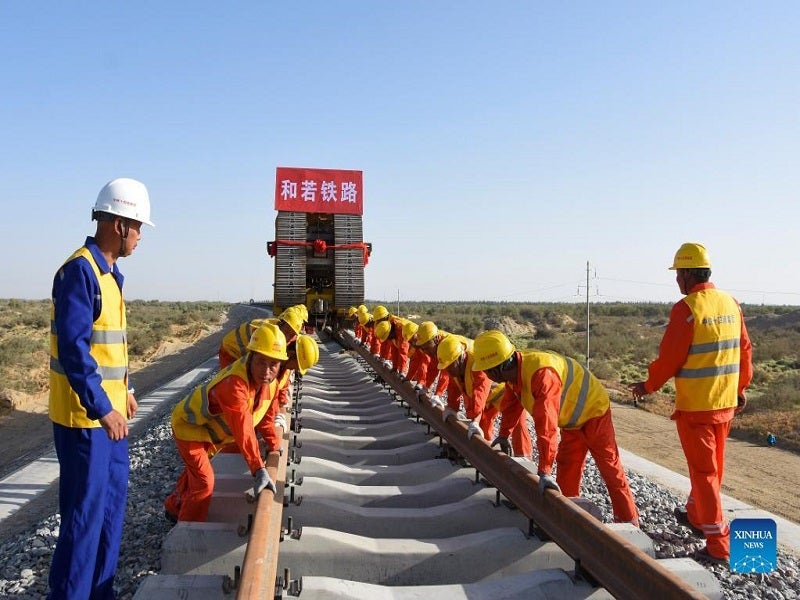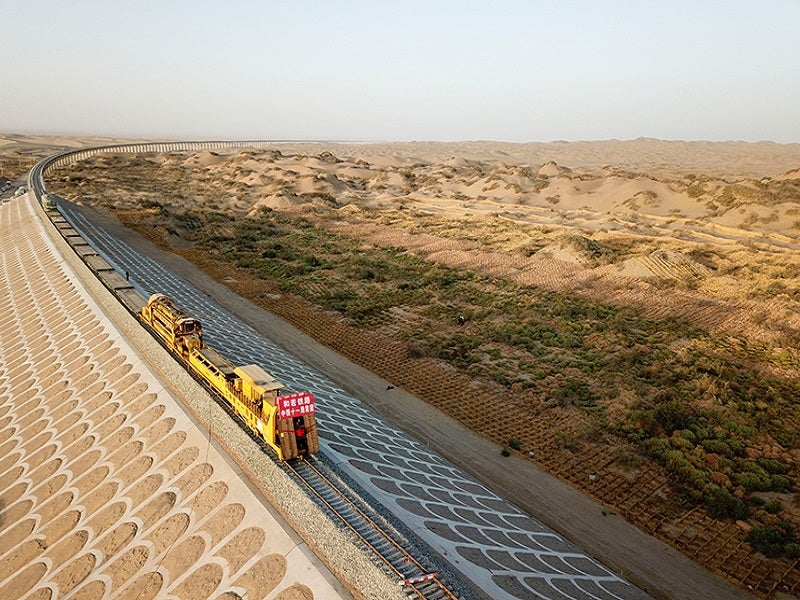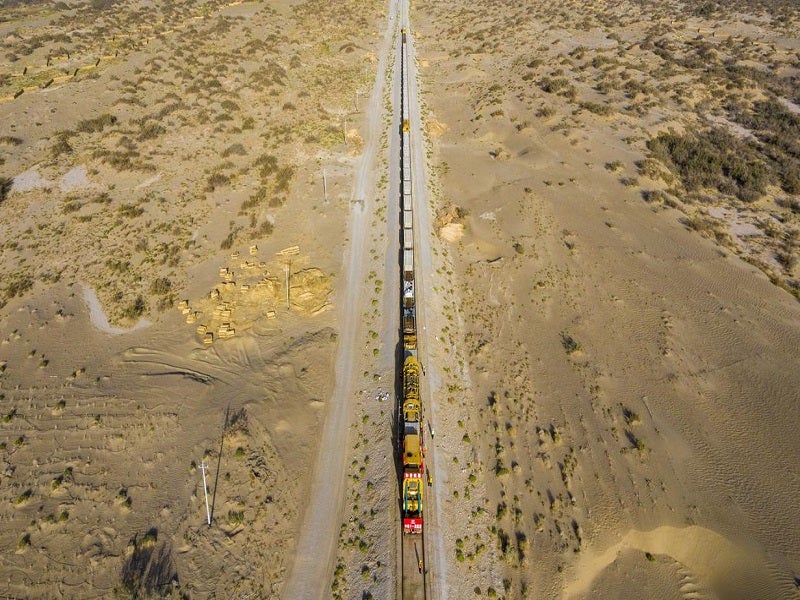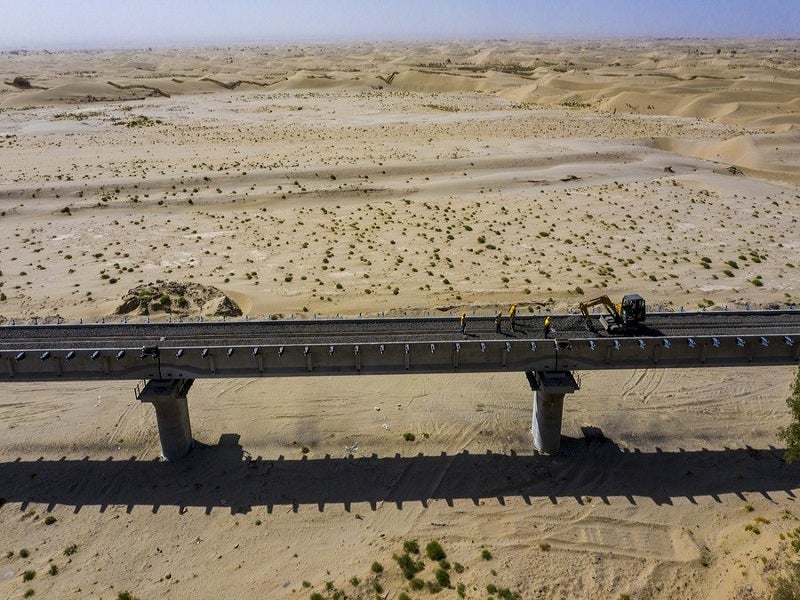The Hotan-Ruoqiang railway is a new single-track line that runs through the edge of Taklimakan Desert in Xinjiang Uygur Autonomous Region, north-west China.
The 825km-long railway line is the final part of the Taklimakan Desert railway loop, which is claimed to be the first desert railway loop line in the world.
Scheduled to become operational in June 2022, it is a key regional railway line being developed as part of China’s medium and long-term railway network plan. The project is expected to involve a total investment of CNY22.15bn ($3.48bn).
Construction of the Hotan-Ruoqiang railway line began in December 2018. The track-laying work for the line began in May 2020 and was concluded in Minfeng county in September 2021.
Details of Hotan-Ruoqiang railway line
The Hotan-Ruoqiang railway line will extend between Hotan city and Ruoqiang county in Bayingolin Mongolian Autonomous Prefecture, a county located on the southern edge of the Taklimakan Desert in Xinjiang.
The line will become a part of the third major transit line that runs between the eastern and western parts of Xinjiang. It will be linked to the existing Kashgar-Hotan Railway, the Golmud-Korla Railway, and other lines in southern Xinjiang.
The Hotan-Ruoqiang together with the Altay-Fuyun-Zhundong and Golmud-Korla lines will extend the regional railway network by 2,013km.
The new line will accommodate both passenger and freight transit. It will feature 69 stations along the route. Trains on the line will run at a maximum speed of 120km/h.
Construction details
The project involved anti-desertification activities that were conducted simultaneously with the construction works.
Viaducts were constructed along the areas more prone to sandstorms to offer safe passage for workers. The construction vehicles were protected with sand-proof tarpaulins.
The project involves the construction of five bridges over the sand, which together account for 53.7km.
The 8.6km-long Yimlakut bridge covers a section of the Taklimakan Desert. It is designed to allow sand to blow below the bridge to reduce the impact of sandstorms on the tracks and trains. The Niya River Grand Bridge, which has a length of 18.6km, is the longest of the five bridges. It is constructed to withstand wandering dunes.
The Ruokeya Grand Bridge features an average pier height of 24m, while the highest pier is 35m tall. It features 297 openings for the movement of sand. The Ruokeya bridge’s girder erection was completed by the end of November 2020.
Project benefits
The project will enable faster and more comfortable travel on the route between Qiemo county and Hotan city. It will contribute to regional economic growth and mineral resource development along the route.
The Hotan-Ruoqiang railway is also expected to boost the tourism sector in the region. It is expected to connect five counties in southern Xinjiang and towns of the Xinjiang Production and Construction Corps to the rail network.
The rail project generated more than 4,100 local jobs as of September 2020.
Contractors involved in Hotan-Ruoqiang railway project
The China Railway Signal & Communication Shanghai Engineering Bureau Group (CRSCS) is involved in the construction of the Hotan-Ruoqiang railway.
CRSCS is responsible to procure engineering equipment, install telecommunications, and supply engineering vehicles for the project.
China Railway 11 Bureau Group, a subsidiary of China Railway Construction Corporation (CRCC), was involved in the construction of the Ruokeya and Niya River bridges.











